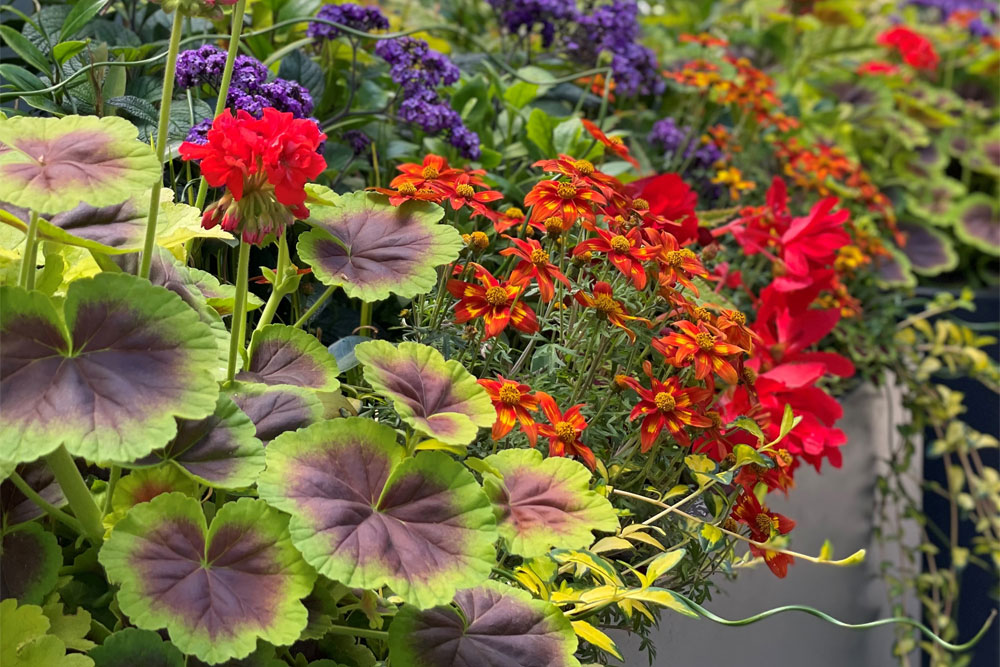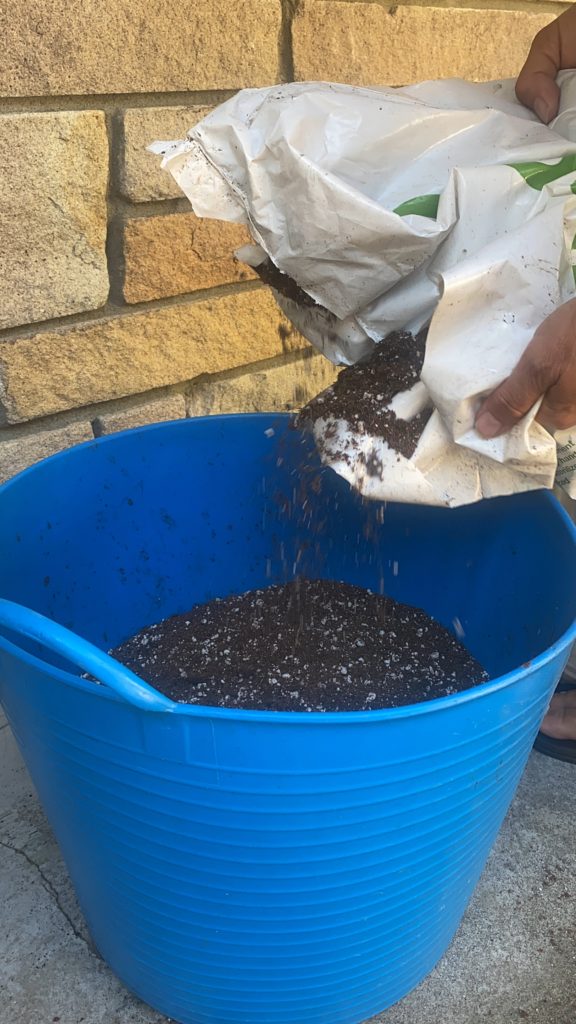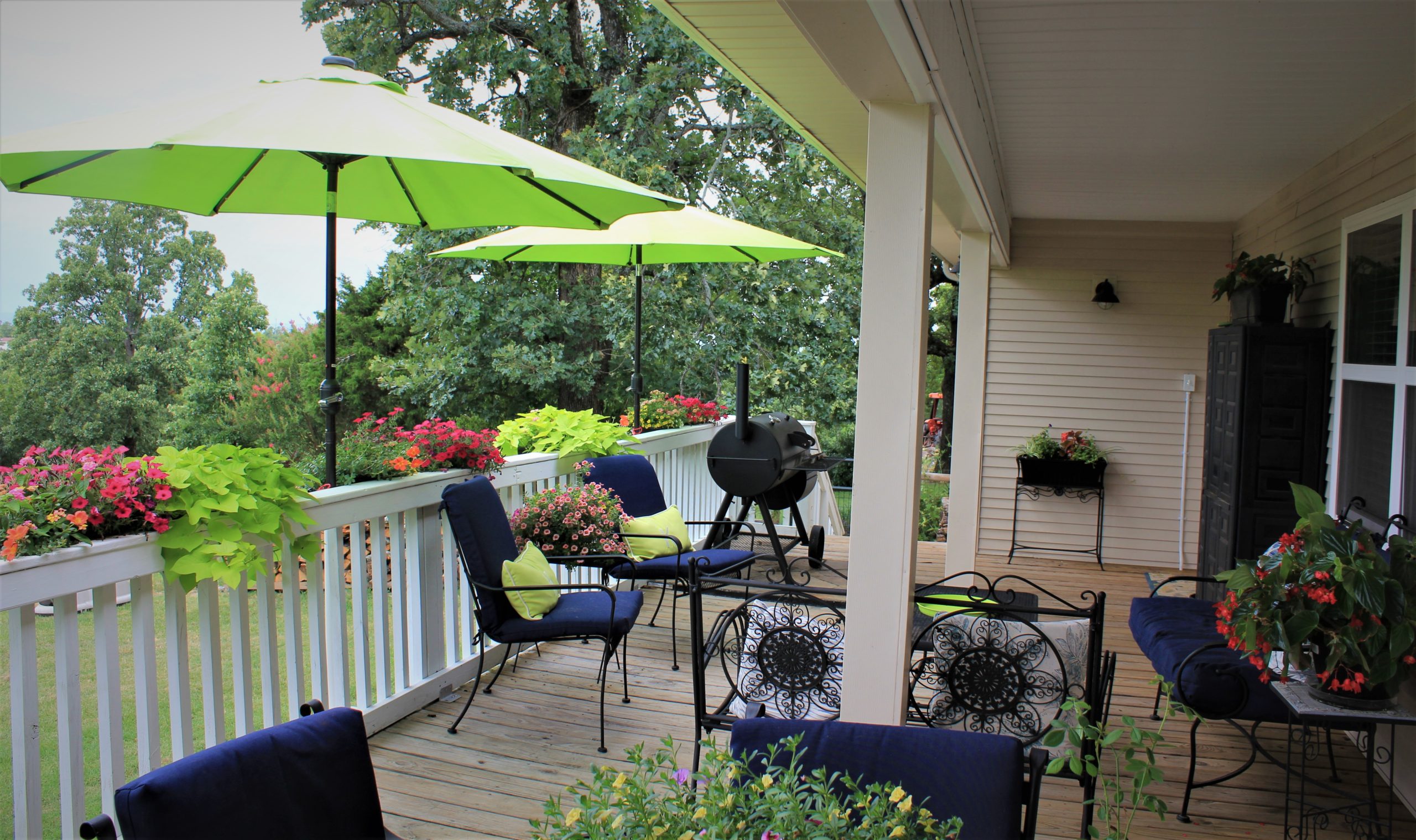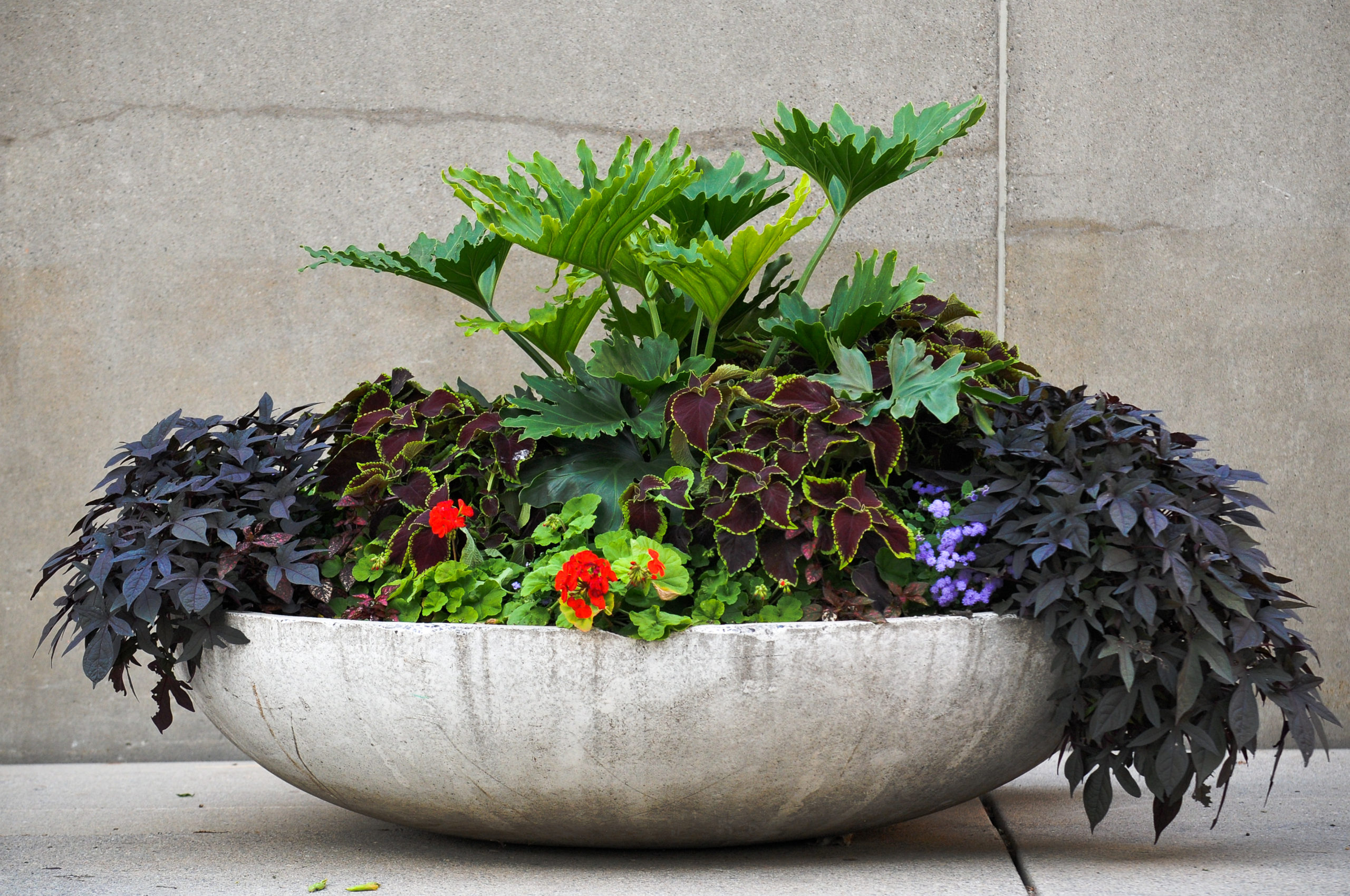
Hot Summer Tips for Water-Wise Container Gardening
CONTAINED
BRILLIANCE
The heat has arrived and forecasters throughout the nation are telling most of us that it’s going to be an unusually warm and dry summer. This can be stressful not only for us, but for the container plantings we care for. How do we get the best from our container gardens — which need consistent watering in order to develop a strong root system and thrive — but also be water-wise in our thinking, and use best practices when it comes to conserving water?
It's a good question, and although it takes some planning, you can be a container gardener and be water-wise.
Soil
Choosing a good potting soil, one that doesn’t dry out too quickly, is a good place to start. I’ve just recently taken to the practice of sprinkling a light layer of compost and scratching it into the potting soil when planting containers for summer. This not only provides a better appearance — aesthetically layering over the stark unappealing white perlite that any good potting soil should have — but also nourishes the plants and helps with water retention.

Keep in mind that a good potting soil is one that holds moisture, but not too much and doesn't dry out quickly. Check out April's blog post Soil: The Underated Secret Sauce for a deep dive into choosing a good soil.
Plant Selection
Plants have different watering needs, but all need some amount of water to actively grow. Choosing and planting plants that thrive in similar light conditions and have like watering needs together is another good step towards being a waterwise gardener. Plant roots can occupy the soil differently. Some plants run their roots deep and prefer deep watering less frequently. Others run their roots a bit more shallow and prefer less water more often. Potting plants with similar watering requirements together can bring even more benefits than just smart water use — many plants provide physical and chemical benefits for one another, discouraging diseases and pests when planted together. Jessica Wallizer’s recent book “Plant Partners” Science Based Companion Planting Strategies” is an excellent read on this if you are interested in delving deep into interplanting for benefits. Also, consider using drought tolerant plants – plants that thrive in hot dry conditions while retaining their aesthetic value. Bidens, Cuphea, Lantana, Salvia, and Zinnia are all wonderful prolific bloomers that stand up to hot dry weather. Additionally, succulents are similarly drought-tolerant, my favorite being an aeonium. Think “right plant, right place” — if you choose plants that are well-suited to the location where they are planted, they will perform well with limited additional input.

Intentional Planting
When planting, space plants far enough that they have room to grow and can still enjoy air circulation but close enough that their leaves slightly touch one another. This will help keep the soil surface cool.

Container Placement
If possible, locate your planters where they will receive a bit of reprieve from the sun. Even sun-loving potted plants appreciate a little shade during the long days of summer. Morning and afternoon sun is less harsh than mid-day sun so perhaps place your containers where they are sheltered at this time of day. This could be at the edge of a patio shaded by a large tree later at noon, or near a patio umbrella that can be easily opened up and closed.
Container Size and Type
Planting in containers in a larger size and in materials that are less porous will also assist in conserving water. Larger pots hold more soil, thus providing more water to be taken up by the plant’s roots. Ceramic glazed and plastic pots are more impermeable than terracotta or wood which results in less water being lost to evaporation, keeping moisture at the root zone. Metal, although less porous, is a material that heats up quickly and leeches moisture from the soil rapidly, and so not necessarily the best choice when trying to be water wise.

All of the above are considerations that can be made before the container is even planted, take just a little planning, and can help with the conservation of water.
Once you’ve planted your containers, you’ll want to water responsibly. Drip irrigation and hand-watering are the two methods of watering containers that are most used and recommended. Drip irrigation offers consistent control over watering time and amount, offering conservation through customization. Hand-watering, though it provides challenges with consistency, allows you to water the plant exactly where it needs it and spend time with your plants, interacting with and nurturing them daily. It prompts you to slow down, take notice of nature and recognize potential issues early. If hand watering, try to water with a watering can that has a long spout and no nozzle or utilize a small watering wand. Both are watering tools that allow you to reach in between the plants and more efficiently get water to the soil, where the plants root hairs can take it up.
Whichever apparatus you choose for watering, here are some how-to's for waterwise gardening when it comes to containers.
- Water at soil level near the base of the plant(s). This is where the plants’ root system is located and root hairs can interact with microbes in the soil to take up the water and nutrients it needs.
- Water in the morning before the heat of the day to minimize evaporation.
- Avoid giving your plants a shower. Leaf splash can spread disease, or lead to leaf scorching when the water droplets are met with bright sunshine.
- Water deeply, rather than giving your plants frequent sips. It’s best to saturate, let the soil dry out and then deep water again. Think of soil like a dry sponge. At first the sponge doesn’t pick up much water. It’s actually when the sponge is saturated that it has greater holding capacity. Whatever method is chosen, deep and regular watering is vital to strong root development and healthy plants.
Though it can seem like an additional outdoor chore, if done with intention, watering during extreme weather conditions can be richer than that. It’s more than just keeping the plant alive, it’s caring for something, it’s plant-parenting, it’s tending and nourishing, it’s relational and routine, it’s developing a deeper relationship with yourself, nature and the environment around you.
So water wise, water happily.


